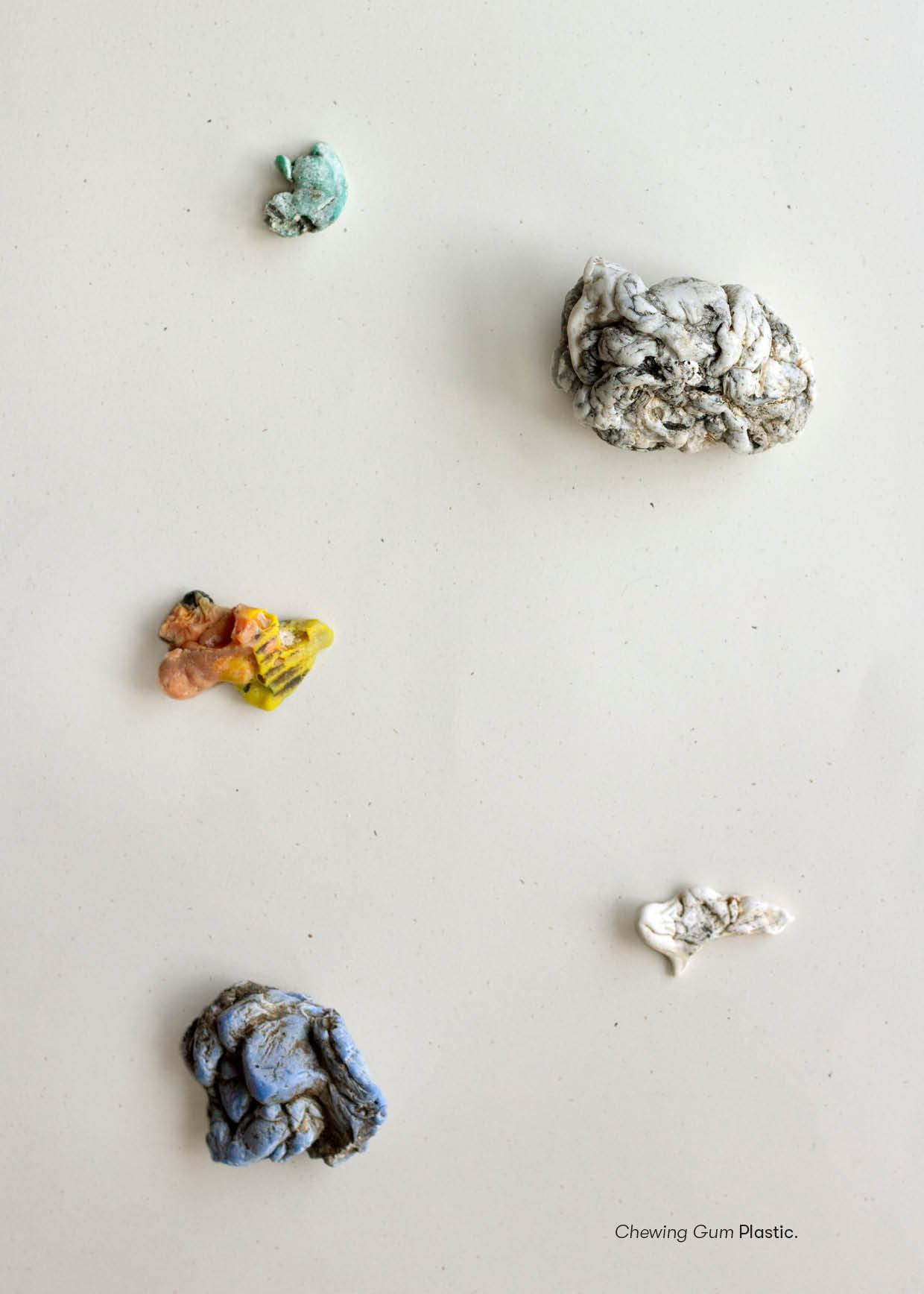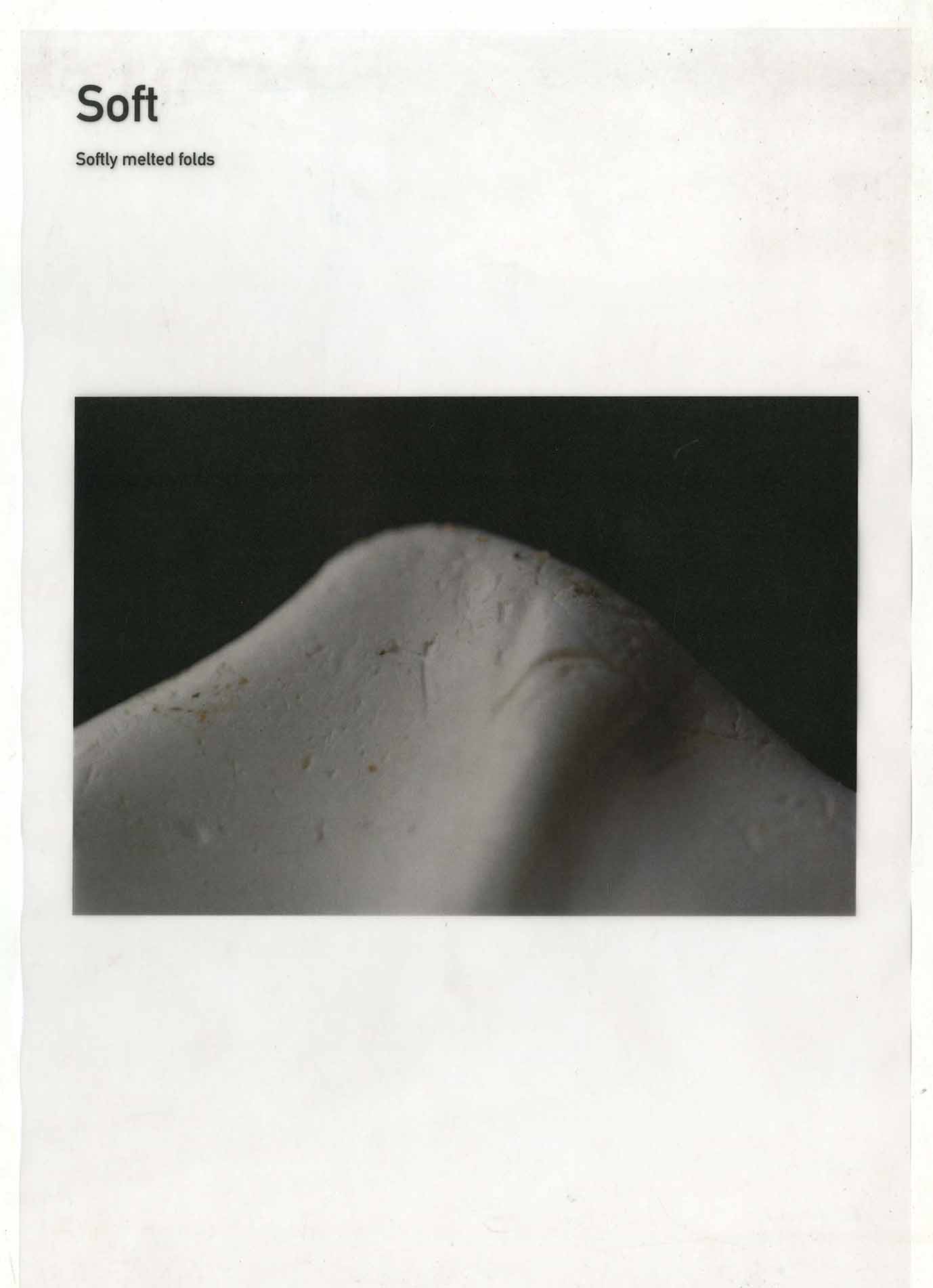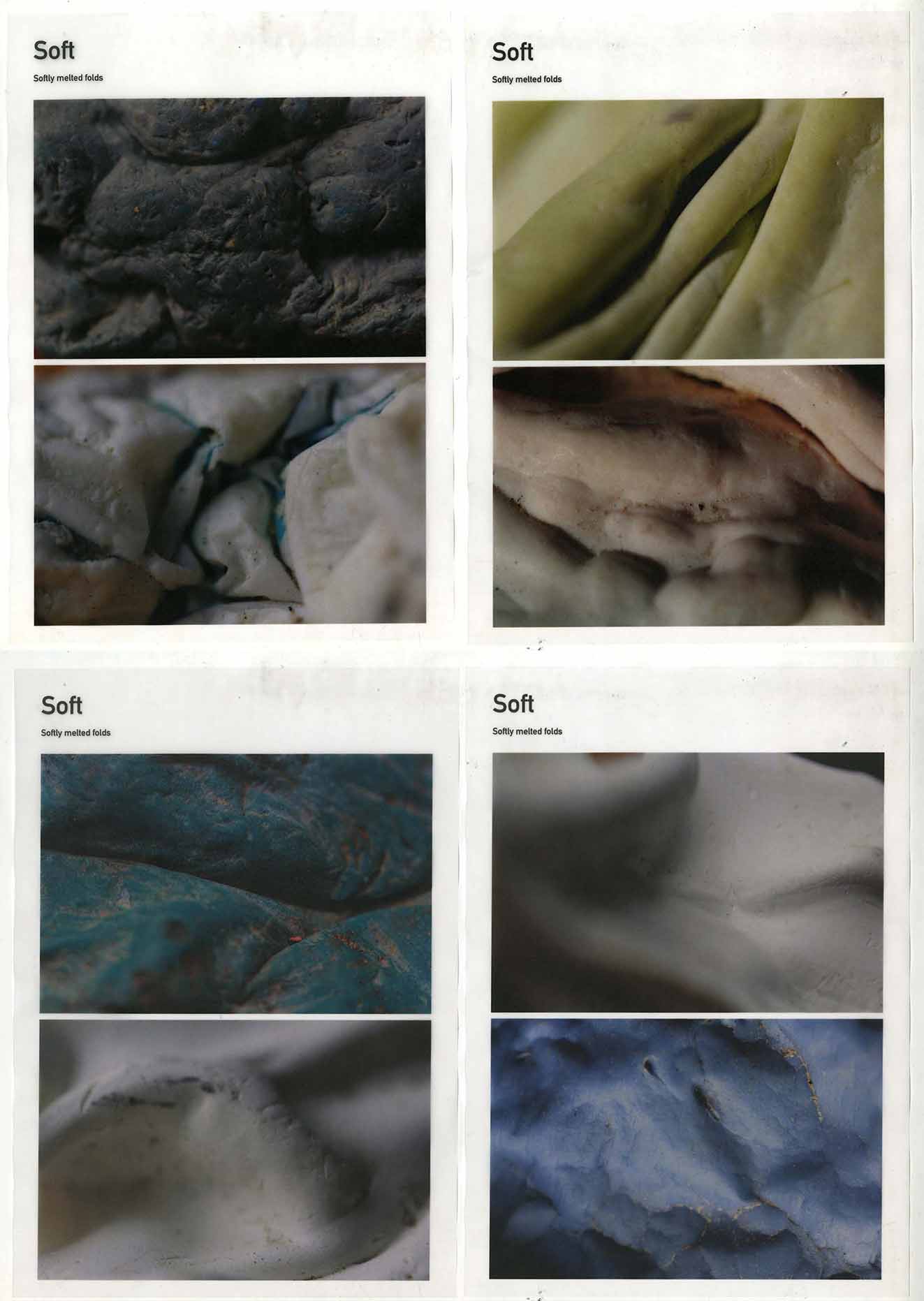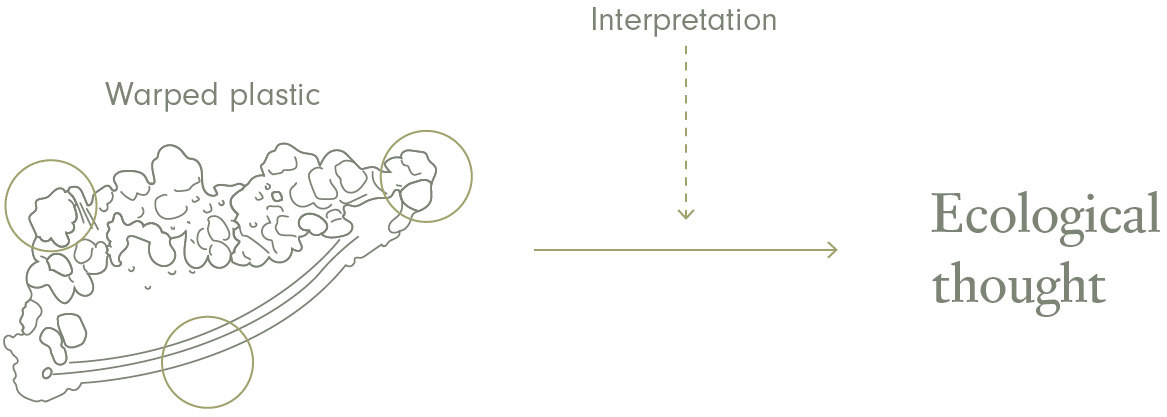Experiment
Visual Analogies


Aims
To find less literal, and more playful and inviting ways of representing the warped plastics.
This was an exercise in observation and interpretation in order to find other ways of talking about these plastic forms besides reiterating what the eye could already see.
This was an exercise in observation and interpretation in order to find other ways of talking about these plastic forms besides reiterating what the eye could already see.
Precedents
This experiment responds to the reflections of Experiment: A Typology of Marine Organisms by turning to more playful and fictional representations.
Methods

- The plastics looked like aerial views of natural landscapes (Figures 15–17)
-
The plastics looked like chewed up pieces of gum (Figure 12 & 13)
-
Plastics of different colours had warped to meld together (Figure 18)
Photography was used once again to capture and document these visual analogies—however, the photographs needed accompanying text to make the correlations I was forming obvious. My familiar practice of categorising and naming took over as I established labels for these associations.




Reflection
These outcomes resulted in a visual summary of things I had observed in the physical appearances of the plastics, but the significance of these analogies was unclear. At this point, I was letting my observations direct my inquiries rather than being guided by my research intent of finding visual stories to encourage ecological thought in consumers. Searching for new interpretations also highlighted that I had become familiarised to the warping of the plastics; they were no longer foreign or new to me, which is why I felt compelled to articulate and establish meaning for them. The visual impact of these warped plastics has a limit—the surprise and fascination that their ambiguity brings is short-lived.
This experiment, however, did demonstrate a shift in approach compared to previous experiments. While previous experiments sought to document and re-present the warped plastics as a way of stimulating ecological thought in consumers (Figure 19), this experiment added a step to this process and recognised that there needed to be another level of interpretation and meaning attributed to these warped plastics in order to facilitate consumers reaching these ecological thoughts (Figure 20).
![FIGURE 19 Previous experiments assumed a linear approach for facilitating ecological thought.]()
![FIGURE 20 This experiment illuminated that ecological thought needs to be facilitated by more than just the visual of the warped plastics.]() This marked a shift in understanding how to communicate to consumers, and particularly, understanding that the visual impact of the warped plastics alone was not enough to automatically stimulate ecological reflections. It was my use of analogy, descriptive language and labelling that sought to attribute further meaning to these plastics.
This marked a shift in understanding how to communicate to consumers, and particularly, understanding that the visual impact of the warped plastics alone was not enough to automatically stimulate ecological reflections. It was my use of analogy, descriptive language and labelling that sought to attribute further meaning to these plastics.
My use of analogy and description reflected a need to understand these plastics and make them recognisable again. The forms of these plastics were so warped and foreign that analogies had to be used to be able to connect with and comprehend them through my human consumer eyes. This highlighted that we still need to be able to recognise and resonate with these plastics for any shifts in perceptions to occur—they can’t be completely decontextualised from human consumer realities or else they become nothing more than an object without meaning. The particular analogies chosen in this experiment, however, were perhaps not suitable for inspiring ecological thought in others.
This experiment, however, did demonstrate a shift in approach compared to previous experiments. While previous experiments sought to document and re-present the warped plastics as a way of stimulating ecological thought in consumers (Figure 19), this experiment added a step to this process and recognised that there needed to be another level of interpretation and meaning attributed to these warped plastics in order to facilitate consumers reaching these ecological thoughts (Figure 20).


My use of analogy and description reflected a need to understand these plastics and make them recognisable again. The forms of these plastics were so warped and foreign that analogies had to be used to be able to connect with and comprehend them through my human consumer eyes. This highlighted that we still need to be able to recognise and resonate with these plastics for any shifts in perceptions to occur—they can’t be completely decontextualised from human consumer realities or else they become nothing more than an object without meaning. The particular analogies chosen in this experiment, however, were perhaps not suitable for inspiring ecological thought in others.
Insights
The particular use of analogy in this experiment to imagine what these plastics could be saying (but not necessarily displaying) offered a path forwards in this research. It illuminated that I should be exploring how to actively frame and interpret the warping of these plastics, and to present these interpretations in ways that are meaningful and ecologically thought-provoking for consumers.